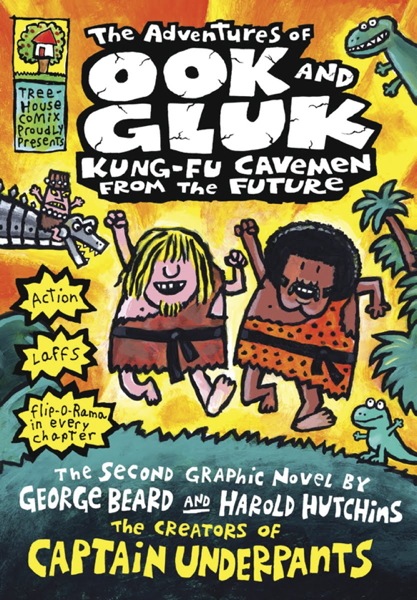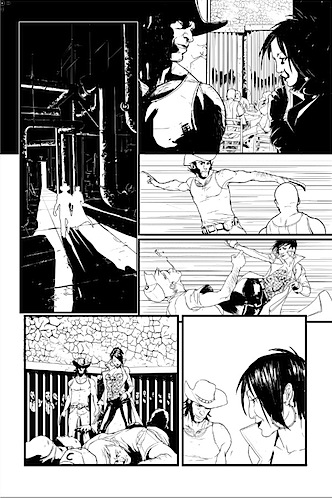A couple of posts over the weekend commented on the diversity or lack thereof of contemporary comics and comics retailing:
In the wake of the THOR: THE MIGHTY AVENGER disaster, Brigid asks Can all-ages comics survive on the direct market alone? and points out that kids these days like GNs and not periodicals:
Brower brings up another important point: Even in a comics shop, in the all ages category, graphic novels outsell single-issue comics. Again, there’s a culture clash: The Wednesday crowd, pre-ordering from Previews, coming in regularly to get a small bite of a larger story, versus kids who aren’t interested in going through a whole procedure to get their comics, and who like a lot of story in a single chunk. Spinner racks were great when every issue of Superman had three complete stories in it; they don’t work for long story arcs, though, because it’s too easy to miss an issue. That is the comics shops’ strength. The logical thing with a comic like Thor would be to release it straight to trade, with an attractive trade dress (not those white-on-black spines that all look alike) and sell it in chain bookstores, comics shops, book fairs, and anywhere else that will take them. But comics marketing seems to all be geared in a single direction, toward the narrower path.
The Brower in question is Patrick Brower Co-Owner of Challengers Comics who writes in this iFanboy piece:
Can the Direct Market Support All Ages Material?
Challengers can sell a ton of units of a single graphic novel series that is targeted to all-ages. All-ages meaning they can be enjoyed by anyone; not that they are written for kids. My examples are Marvel’s Power Pack minis, Kazu Kibuishi’s Amulet series, Kean Soo’s Jellaby, Jill Thompson’s Magic Trixie, Jeff Smith’s Bone, and on. These are clever, wholesome series that tell great stories and keep kids entertained. But they’re graphic novels, not single issues. Even the youngest of comic book readers see the pamphlet format as disposable, but when it’s a graphic novel they want to read it (or have it read to them) again and again and again. I can’t explain why, but I can tell you from experience it works. By the accounts of our customers, Challengers seems to have a larger than average all-ages section. We don’t think it’s nearly enough, but it is 50% single comics and 50% graphic novels. The graphic novels sell rings around the single comics. Even books like (Marvel Adventures) Spider-Man sell way better in the digest format then do the singles.
As Brower’s list of successful material shows…it’s not like there isn’t good material being produced for younger readers.
While people sit and mourn the passing of the Langridge/Samnee THOR, it’s key to recall that children’s comics are probably the fastest growing segment of the print comics market right now, if you go by bookstore sales. Dav Pilkey’s OOK & GLUK had a print run of 1 million copies, by far the biggest for any comic this year.
The biggest irony is here is that soon Marvel characters will be selling better for kids outside comics shops than in. Marvel recently turned over its kids book licensing to Disney, and if there’s one thing Disney knows how to do, it’s license children’s books.
Over on the distaff side, blogger Alexa D. on her Ladies Making Comics Tumblr counts this month’s solicitations and finds that out of 727 books in November, 96 had female talent on them, or 13.2 percent, which is not a great number but probably an improvement over past years as far as women regularly getting work drawing comics at Marvel and DC goes. (Writing a superhero comic is still the hardest area to break into for a woman.) The figure doesn’t count manga (because it’s different) and most indie comics by women come out from small presses that aren’t carried by Diamond.
While 1 in 8 doesn’t seem like much progress, consider that when The Death of Spider-Man in ULTIMATE SPIDER-MAN was announced, no one even noticed that it was being drawn by Sara Pichelli (below). When women are being assigned to big event comics and no one even notices, that’s a sign of a much healthier industry.







Small correx – OOK AND GLUK is by Dav Pilkey.
“Even the youngest of comic book readers see the pamphlet format as disposable, but when it’s a graphic novel they want to read it (or have it read to them) again and again and again. I can’t explain why, but I can tell you from experience it works.”
This.
I’ve seen it with my own kids. My oldest still reads her pamphlets (she’s gotta have her monthly dose of Tiny Titans!), but my son prefers the graphic novels. Of course, that’s the only way he knows Bone and some of the others.
Oh, yeah… The comments about trade dress are spot on too.
My kids love GNs. GN are just sturdier for kids to handle, much like the library books they bring home from school. The exception being Sonic, they like having that as their monthly fix.
If Thor doesn’t work as a monthly book, Marvel should just release it as a series of original graphic novels a la that superman earth one book.
I’m not quite sure why, but the debate over this book annoys me. I’m sure it’s great, but I wish it’s fans were pushing harder for Langridge and Samnee to do their own thing than for Marvel to do a book that obviously can’t succeed.
I think Team Comics™ believes its own hype that there is widespread support for this book. To wit: the comics industry is a what – 2 billion dollar industry? Certainly less than five. And how many comics blogs are there?
On the other end of the spectrum is the shipping container industry. It takes in nearly one trillion dollars of revenue, and I found two blogs about it unrelated to living inside a shipping container.
The room is smaller than we think.
I’m sorry if i say something obvious but it seems that the main problem for big publishers is distribution. I mean, Archie still goes on and is distributed in other places than comic-shops, right ? So maybe if Marvel & DC decide to apply to the same buisness plan, they can make some money out of all-ages titles and support them.
And of course, children wants to read GN over and over again. It’s children so they take care more easily of a book than a magazine. And they like stuff that looks nice than damaged goods. ;) That said, it might more interesting for them to have 22 pages stories with something to read that they can pick in drugstores and that’s cheaper than a GN. Because Bone is a great title, but it’s not an impulsive act of buying and it’s quite heavy to read it everywhere (if you take the omnibus).
Never really thought about it that way… but although my 5-year-old daughter liked the Johnny DC Supergirl and Muppet Show comics, she keeps coming back to the Josie & The Pussycats trade. It’s just may be because it’s easier for her to handle.
I bet that if Roger Langridge and Chris Samnee would pitch a book with a real book publisher, they’d have no problem getting picked up and make lots of money.
I’m not sure if this is important, but has anyone done the math? How many monthly 2.99 Thor titles are collected into one GN? How much is the GN? Which is more expensive?
I think these issues are important to the parents, who are usually paying the bills.
One issue I see with children’s comics and comic shops, is the lack of book publisher comics for kids in specialty shops. I don’t see Ook and Gluk in comic shops, Babymouse either.
I’m not sure where you’re getting your information, but good topic. I needs to spend some time learning more or understanding more. Thanks for fantastic information I was looking for this information for my mission.